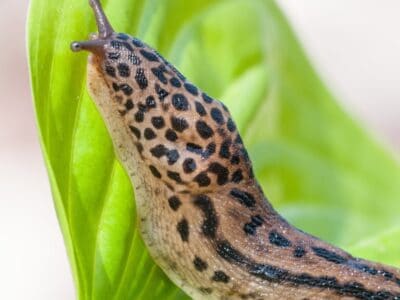Death Adder
Acanthophis antarcticus
The Death Adder is more closely related to the Cobra than other Australian snakes.
Advertisement
Death Adder Facts
- Prey
- Birds, small mammals
- Fun Fact
- The Death Adder is more closely related to the Cobra than other Australian snakes.
- Distinctive Feature
- Black, brown and red bands
View all of the Death Adder images!
“The Death Adder is more closely related to the Cobra than other Australian snakes.”
Also known as the Common Death Adder, this species is native to eastern and southern Australia, as well as Papua New Guinea. The species avoids desert areas but is plentiful in wooded or grassy areas. These reptiles are quite adept at blending into their surroundings, enabling them to hunt by stealth. One female Death Adder can produce three to over thirty live offspring.
Death Adder Amazing Facts
Boasts the longest fangs of any Australian snake
Hunts by ambushing its prey through the use of camouflage
Strikes faster than any other snake in Australia
Where To Find the Death Adder
Seldom found in desert areas, the Death Adder is most at home in heath, woodland, forest, and grassland areas. Because the coloring found from head to tail is a type of camouflage, it is common for people to stumble upon these snakes accidentally. As with most snake species, the adder is less likely to be active during the hottest part of the day.
Death Adders have been found in every Australian state and territory besides Tasmania, showing the species’ adaptability. Sydney is the only urban area that has been known to have a population of these snakes. People who encounter these snakes are most likely to do so while engaging in hiking or similar activities.
Death Adder Scientific Name
The Death Adder, often known as the Common Adder, has the scientific or Latin name of Acanthophis antarcticus. This snake belongs to the Reptilia class and is part of the Elapidae family.
Death Adder Population & Conservation Status
The exact Death Adder population size is unknown; however, the reptile is widespread within its habitat. This snake is an IUCN Red List Least Concern status species. Despite the exact population size being unknown, there is evidence of steady, continued, healthy growth.
How To Identify Death Adder: Appearance and Description
The Death Adder has a triangular-shaped head often likened to an arrow. This snake has long fangs that provide a lethal bite and a stocky-looking body. The tail, however, is thin and has a short spine. This snake has a gray to reddish-brown body with black, brown, or red bands, with a gray to cream belly. The reptile measures 26 to 38 inches.
How to identify a Death Adder:
Triangular head
Stocky body
Thin tail with short spine
Gray to reddish-brown body
Gray to cream-colored belly
Death Adder Venom: How Dangerous Are They?
The Death Adder is one of the most venomous snakes in the world. Before the invention of antivenom, most people bitten by these snakes died, and the bites can still be fatal. Prompt medical attention is necessary if you are bitten, and you should avoid movement as much as possible until you receive treatment.
Death Adder Behavior and Humans
Death Adders are venomous but not openly aggressive. Adder-human conflict is more likely when engaging in outdoor activity and someone manages to disturb one of these snakes. In most circumstances, these snakes prefer to avoid attracting attention.
View all 110 animals that start with DDeath Adder FAQs (Frequently Asked Questions)
Are Death Adders venomous?
Death Adders are venomous, using their fangs to inflict a fatal bite on their prey through their neurotoxic venom.
How do Death Adders hunt?
Death Adders lie in wait to strike their prey, blending in with the scenery to avoid detection.
Are Death Adders aggressive?
Death Adders will not seek open conflict with non-prey animals but will strike if cornered or otherwise threatened.
Where do Death Adders live?
Death Adders usually avoid desert areas of Australia but live in woodland, forest, heath, and grassland areas.
What do Death Adders Eat?
Death Adders eat birds and other animals of small size, including Cane Toads, which have sometimes poisoned the snakes.
3-30+
A Death Adder is a venomous snake species native to Australia and related to Cobras.
How venomous are death adders?
Death Adders are highly venomous, killing prey quickly with a bite and capable of killing pets with their bites.
What eats a common death adder?
Cane Toads often eat young Death Adders, and Buzzards and Crows prey on Death Adders of all sizes.
Why is it called a death adder?
Death Adders get their name from their resemblance to vipers, which many people consider the deadliest type of snake.
Is a death adder a viper?
Despite its viper-like appearance, a Death Adder is more closely related to the Cobra.
Who would win a fight between a death adder and an inland taipan?
An inland taipan would win a fight against a death adder. The inland taipan is the larger snake of the two and it takes longer for the venom to impact them than the smaller adder. Another interesting factor is the strength of the venom of the two snakes. The inland taipan has much more powerful venom than the death adder.
Thank you for reading! Have some feedback for us? Contact the AZ Animals editorial team.


















